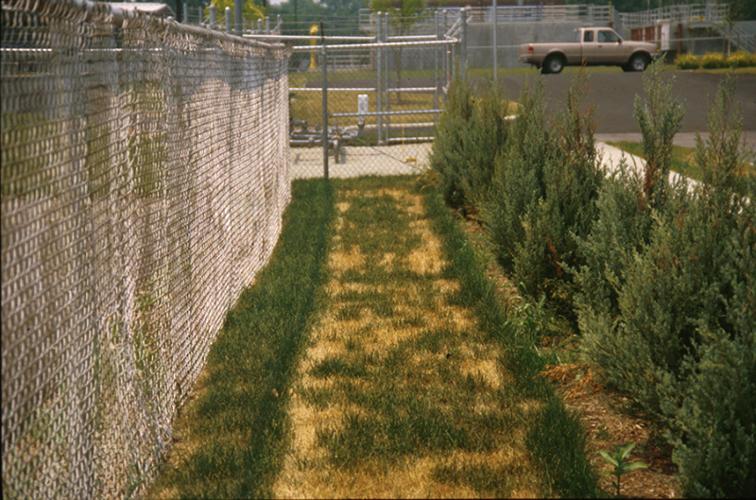Picture of the Week
November 9, 2020
Reduce summer stress symptoms in Turf with a November fertilization
Glenn Hardebeck, Turfgrass Research Agronomist, Purdue University
Summer stress or heat stress is a problem throughout most of our landscape during prolonged hot summer spells. Plants weakened by other factors such as compaction, low mowing height, improper watering and poor fertility management are especially prone to summer stress related problems. The picture below is indicative of summer decline of turfgrass that was predisposed to heat stress problems. Many times the culprit is actually a combination of problems that conspire to kill the turf. In this case, the surrounding fence and pavement act to increase the radiant heat on the narrow strip of turfgrass. Additionally, this area receives spring only fertilization with low/irregular mowing. This area was pushed over the edge from an early summer broadleaf weed application followed by summer heat.
Though most of us are no longer thinking of summer, now is the time to be proactive with our lawns with a late fall fertilizer application on cool season turf such as Kentucky bluegrass, perennial ryegrass and tall fescue. A late fall fertilization strengthens the turf through winter, spring and most importantly next summer. This fertilizer application is especially good at improving root density, carbohydrate storage, fall color retention and spring greenup. While heavy spring fertilizer applications will improve greenup, they can reduce carbohydrate storage going into the summer. In effect the grass plants can run out of energy during prolonged hot stressful periods.
>So, if your lawn is still thin due to a rough summer, now is the time to improve its health and stamina for next summer. More information on fertility scheduling can be found in AY-22: Fertilizing Established Lawns.
Click image to enlarge

